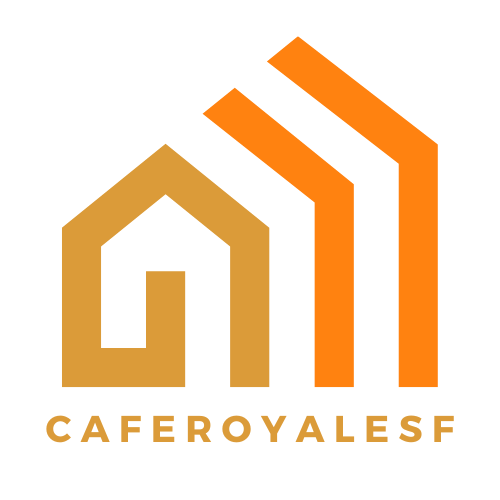Dreaming of a second home? Whether it’s a cozy beach cottage or a mountain retreat, many people find themselves in a pickle when it comes to the down payment. After all, who wants to dip into their hard-earned savings? Luckily, there’s a silver lining! With the right strategies, securing down payment help can turn that dream into reality without emptying your wallet.
Table of Contents
ToggleUnderstanding Down Payment Help
Down payment assistance programs provide essential resources for buyers seeking to purchase a second home. These programs can significantly reduce the upfront cash required for a down payment. Various types exist, including grants, loans, and second mortgages, which cater to different financial situations.
Grants typically do not require repayment, making them an attractive option for potential homeowners. Loans assist with down payment costs, often allowing lower interest rates or deferred payments. Second mortgages serve as additional loans secured against the property, helping to bridge the financing gap.
Eligibility criteria for down payment assistance programs usually depend on household income, credit scores, and the property type. Many programs target first-time homebuyers, but some extend support to those buying a secondary residence. Local and state governments often administer these initiatives, encouraging homeownership within specific communities.
Identifying available programs requires thorough research. Prospective buyers can explore options through official government websites or consult with real estate professionals. Utilizing resources like housing counseling agencies can provide valuable guidance in navigating available assistance.
Applicants should gather necessary documentation, such as income statements, tax returns, and bank statements. An organized approach simplifies the application process and increases the chances of approval for assistance. Timing often plays a crucial role; submitting applications timely may enhance prospects for securing funding.
Understanding down payment help options streamlines the path to owning a second home. Accessing these financial resources empowers individuals, making the dream of a vacation retreat more achievable. Homeownership is within reach with the right information and support.
Types of Down Payment Assistance Programs

Several programs exist to help buyers secure down payment assistance for a second home. Understanding each type helps in selecting the most suitable option.
Government Grants and Loans
Government grants and loans provide substantial financial support for second home buyers. Grants often come from federal or state sources and typically do not require repayment. Loans, such as those insured by the Federal Housing Administration (FHA), may offer lower interest rates or more favorable terms. Eligibility for these programs usually hinges on income limits and credit score requirements. Searching local housing authorities or state housing agencies can reveal specific grant opportunities for second home purchases.
Non-Profit Organization Programs
Non-profit organizations offer various programs to assist buyers in need of down payment help. These organizations may provide grants or low-interest loans tailored to specific demographics, such as teachers or veterans. Certain programs focus on areas within the community that require development. Participants usually benefit from counseling services alongside financial assistance. Utilizing resources from local non-profits can significantly enhance the chances of obtaining the necessary funds for a second home.
Eligibility Requirements for Assistance
Different programs offer various eligibility requirements for down payment help. Most initiatives consider factors like household income and credit scores, ensuring assistance reaches qualified buyers.
Income Limits and Other Criteria
Income limits significantly influence eligibility for assistance programs. Many programs set specific income thresholds based on the area’s median income, often ranging from 80% to 120% of that figure. Buyers exceeding these limits may not qualify. Additional criteria might involve employment status, demonstrating job stability and reliability. Prospective homeowners should verify these requirements to gauge their eligibility. Documentation, such as tax returns or pay stubs, typically supports income verification during the application process.
Credit Score Considerations
Credit scores play a crucial role in securing down payment assistance. Most programs look for a minimum credit score, commonly between 620 and 640, depending on the type of assistance available. Higher scores enhance approval chances and may unlock better loan terms. Maintaining a good credit history, including timely bill payments, can significantly affect eligibility. Buyers often need to review their credit reports before applying, ensuring accuracy and addressing any discrepancies. Understanding these requirements helps streamline the application process.
Steps to Apply for Down Payment Help
Effective strategies exist to secure down payment assistance for a second home. The following steps can help streamline the process.
Researching Available Programs
Identifying available down payment assistance programs forms the foundation of this journey. Government websites and local housing authorities typically offer comprehensive lists of programs. Non-profit organizations frequently provide unique grants and loans targeted at specific groups, such as teachers or veterans. Community programs also exist, serving different income levels and housing markets. Understanding each program’s requirements, like credit score limits and income caps, is essential before applying. Knowledge gained from consultations with real estate professionals can further clarify which options fit best.
Preparing Necessary Documentation
Gathering necessary documentation serves as a crucial step in the application process. Applicants primarily need proof of income, which often includes pay stubs, bank statements, or tax returns. Documenting assets may also help, showcasing savings and other financial resources. Credit reports provide insight into creditworthiness, highlighting any existing debts. Applicants should also prepare identification, such as a driver’s license or social security card. Compiling all this information ahead of time can significantly speed up the review process and increase the chances of approval.
Securing down payment assistance for a second home can transform the dream of ownership into a reality. By exploring various programs and understanding eligibility requirements, buyers can access valuable resources that alleviate financial pressure.
Thorough research and preparation are key to navigating the application process successfully. With the right information and support, anyone can find the assistance needed to make their second home aspirations come true. Embracing these options opens doors to new possibilities and adventures.







